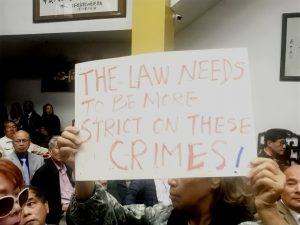In the latest effort to combat the fentanyl crisis in San Francisco, Governor Gavin Newsom and Mayor London Breed announced the establishment of a joint law enforcement task force. However, the absence of Sheriff Paul Miyamoto and his department from this crucial collaboration has led to discussions and concerns about the comprehensiveness of the initiative and its potential impact on effective law enforcement coordination.
Governor Newsom and Mayor Breed emphasized the urgency of the fentanyl crisis and the need to hold those involved in drug trafficking accountable. The newly formed task force, which includes the San Francisco Police Department, the District Attorney’s Office, the California Highway Patrol, and the California National Guard, aims to handle opioid-related deaths as homicide cases, demonstrating a unified approach to addressing the devastating effects of fentanyl on the local community.

Sheriff Paul Miyamoto’s exclusion from the task force, despite the active involvement of his deputies in patrolling and making arrests in the Tenderloin and SOMA areas, addressing the fentanyl crisis, has raised questions about the decision-making process and the potential implications for effective collaboration among law enforcement agencies. The Sheriff’s Department’s hands-on experience and in-depth understanding of the local communities could significantly contribute to the overall effectiveness of the task force’s operations and strategies.
Critics have also questioned the participation of the California Highway Patrol and the California National Guard, highlighting the importance of including the Sheriff’s Department, actively engaged in tackling the fentanyl crisis on the ground in the Tenderloin and SOMA areas. The exclusion of the Sheriff’s Department has prompted concerns about the comprehensive approach of the task force in addressing the fentanyl crisis, especially considering the experience and contributions that the Sheriff’s Department could offer.
As San Francisco continues to grapple with the far-reaching consequences of the fentanyl crisis, the inclusion of all key stakeholders, including the Sheriff’s Department, remains crucial. A collaborative and inclusive approach is essential to effectively address the challenges posed by the fentanyl crisis and ensure the safety and well-being of the community. It is imperative for local authorities to foster transparent communication and a spirit of cooperation among all law enforcement agencies to effectively tackle the ongoing crisis.



 Mayor London Breed’s strategic defunding of the Sheriff’s Department in San Francisco has ignited concerns among law enforcement officials and citizens alike. Operating under the radar, these silent defunding measures, such as the denial of the longevity incentive proposal on May 15th, 2023, and disproportionate budget cuts, are adversely impacting the department’s staffing levels and compromising public safety. Let’s examine these covert actions and their potential ramifications on the Sheriff’s Department.
Mayor London Breed’s strategic defunding of the Sheriff’s Department in San Francisco has ignited concerns among law enforcement officials and citizens alike. Operating under the radar, these silent defunding measures, such as the denial of the longevity incentive proposal on May 15th, 2023, and disproportionate budget cuts, are adversely impacting the department’s staffing levels and compromising public safety. Let’s examine these covert actions and their potential ramifications on the Sheriff’s Department.
 The alarming increase in crime rates throughout San Francisco can be directly attributed to Mayor London Breed’s misguided ideology of manipulating the jail population, resulting in a concerning number of bed vacancies. Recent revelations shed light on the concerning consequences of this flawed approach and the urgent need for change.
The alarming increase in crime rates throughout San Francisco can be directly attributed to Mayor London Breed’s misguided ideology of manipulating the jail population, resulting in a concerning number of bed vacancies. Recent revelations shed light on the concerning consequences of this flawed approach and the urgent need for change.